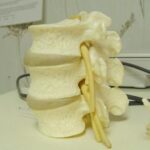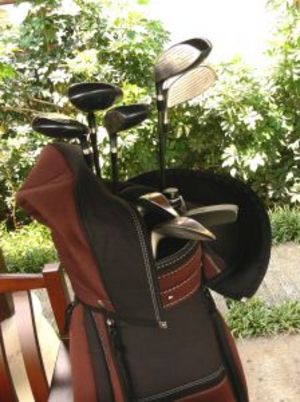Exercise is one of the key ingredients to keeping me alive, well and sane. I mean this literally; I use a regular fitness regimen in lieu of antidepressants, because it has all the benefits of mood-elevating drugs with none of the side effects. Years of chronic pain and the after-effects of a serious car accident have slowly placed limitations on what I can do on any given day. At age 46, I am feeling the effects of years of wear and tear, and my fitness regimen must be flexible for this reason.
I have worked out a basic weekly routine that also incorporates periodic variations and special activities. Not only does this flexibility keep me from getting bored with my workouts, it also allows me to coddle a blown-out knee or a back pain flare-up by choosing an appropriate alternate exercise. For instance, I have previously broken bones in both feet, which ache on rainy days. On those days, I skip the yoga balancing poses in favor of ground stretching. I work out anywhere from 2-5 times per week for approximately 2 hours a session, with periodic supplements as desired.
Regular core workout:
Floor: 30-40 minutes of yoga stretches and yoga-based core, upper body, lower body calisthenic-type poses. Also balancing, headstand or other inversions, or binding poses. Once or twice a week, I spend a full hour at a scheduled, instructor-led yoga class. On these days, I do not include weight training.
Weights: 20-30 minutes of weight training, which focuses mainly on core/back and upper body strengthening but also includes lower body weight machines and leg lifts. I also do between 10-20 regular military-style pushups.
Pool: ½ mile of nonstop laps in a pool which is kept at 90 degrees Fahrenheit. A new addition to my swimming component is high intensity interval training, or HIIT, wherein I perform 3 nonconsecutive laps at my top capacity, usually completing a 50 yard circuit in about 50 seconds. Short rests are required after the high-intensity laps.
Cool down (or warm down) for 5-10 minutes in whirlpool. Often I perform stretches during this phase.
Alternate activities for high-pain days:
Floor: Floor stretches, including head-to-knee poses, reclining hip stretches, back bends and pushups using large “therapy balls,” slow straddle stretches and reclining yoga poses, such as shoulder stand, legs up the wall and twisting lower body stretches.
Weights: wrist therapy using light barbell or individual dumbbells (8-10 lbs.), lowered-weight back extension machine, short brisk walks around the track in weight room.
Pool: On days when I cannot manage laps, I use Styrofoam “water weights,” which I previously used in physical therapy to perform underwater upper body presses. There is also a “ballet bar” style handhold in the shallow area, where I perform yoga-style stretches. I also occasionally walk laps.
Optional activities for low-pain, high-capacity days:
Floor: Martial arts basics, such as punches and kicks using the heavy bag; also a series of 6 basic rolls, using a tumbling mat. On rare occasions, I perform short kata.
Weights: Certain weight machines, such as the butterfly arm machine, “rowing” machine and inclined sit-up platform (although my sit-ups are always the incomplete kind, owing to back problems).
Pool: I occasionally double up the water weights to increase the load on my arm muscles (and core). Also, I have been known to time my laps. My personal best so far is ½ mile in 18 minutes, but my average time is closer to 25 minutes. When my legs and back are strong, I occasionally use the kickboard for a few high-intensity laps.
Wild-card exercise classes: On occasion, I will try out a class at my gym to see if it fits with my physical capabilities. I have tried Zumba, Core Power, Pump, Yoga and even a Karate class, but Yoga is the only class I currently attend regularly. I found the others to be too hard on my knees and other joints.
Exercises for days I can’t get to the gym
I do not have my own car, and so I rely on others to drive me to the gym, which is 25 miles from my house. Thus, I often find myself stranded at home with no way to make it to town. On those days, I find I can still manage certain physical activities.
Yoga: I own two yoga mats, so I simply roll one out at home and perform a short routine.
Walking: I have 3 dogs, and they are always willing to help me get as much exercise as I can stand. I have to be careful, as I have a weak left ankle, which has been sprained multiple times. But I can often manage 1-2 miles between the 3 dogs at any given time. I regularly walk them shorter distances twice a day.
Fidgeting: On a last light-hearted note, I try to incorporate the “fidget factor” into my everyday activities, including household chores. The small extra movements will add up during the day and burn extra calories.
I like to think of my exercise regimen as an integral part of my lifestyle, rather than a separate fitness plan. This strategy seems to have worked, as I have exercised regularly in some form for almost 20 years.






